
Saint Elizabeth University (SEU) is a private Catholic, coeducational, four-year, liberal arts university in Morris Township, New Jersey. Portions of the campus are also in Florham Park.

Henry Kent Hewitt was the United States Navy commander of amphibious operations in north Africa and southern Europe through World War II. He was born in Hackensack, New Jersey and graduated from the United States Naval Academy in 1907. His classmates included Patrick N. L. Bellinger, Jonas H. Ingram, George M. Courts, Claud A. Jones, and Willis W. Bradley.
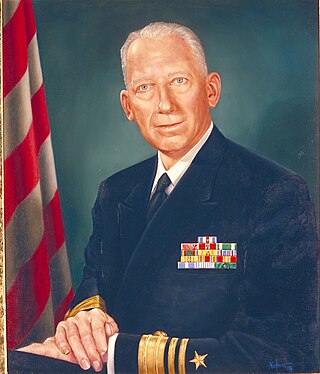
Laurence Hugh Frost was a rear admiral in the United States Navy who served as Director of Naval Intelligence and Director of the National Security Agency.
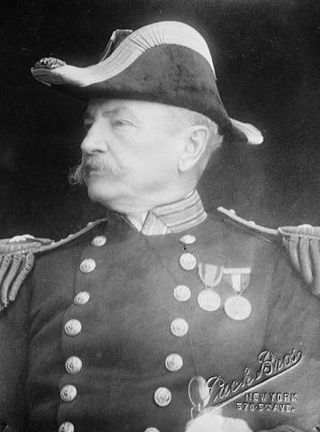
Charles Johnston Badger was an rear admiral in the United States Navy. His active-duty career included service in the Spanish–American War and World War I. From 1919 to 1920 he was vice president, from 1920 to 1921 and 1922 to 1923 president of the Aztec Club of 1847.

Oscar Charles Badger II was an admiral of the United States Navy who served in both World Wars, and, as a junior officer, received the Medal of Honor.

Roy Lee Johnson was a highly decorated four-star Admiral in the United States Navy. A Naval Academy graduate, he trained as Naval aviator and distinguished himself as Air Group Commander during several World War II campaigns.
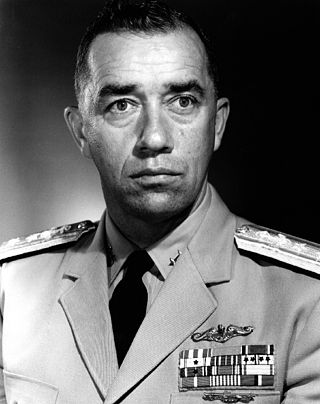
Eugene Parks "Dennis" Wilkinson was a United States Navy officer. He was selected for three historic command assignments. The first, in 1954, was as the first commanding officer of USS Nautilus, the world's first nuclear-powered submarine. The second was as the first commanding officer of USS Long Beach, America's first nuclear surface ship. The third was in 1980 when he was chosen as the first President and CEO of the Institute of Nuclear Power Operations (INPO) from which he retired in 1984.
Hispanic and Latino Admirals in the United States Navy can trace their tradition of naval military service to the Latino sailors, who have served in the Navy in every war and conflict since the American Revolution. Prior to the Civil War, the highest rank reached by a Latino-American in the Navy was commodore. Such was the case of Commodore Uriah Phillips Levy (1792–1862), a Sephardic Jew of Latin American descent and great grandson of Dr. Samuel Nunez, who served in the War of v. During the American Civil War, the government of the United States recognized that the rapid expanding Navy was in need of admirals therefore, Congress proceeded to authorize the appointment of nine officers the rank of rear admiral. On July 16, 1862, Flag Officer David Glasgow Farragut became the first Hispanic-American to be appointed to the rank of rear admiral. Two years later (1864), Farragut became a vice admiral, and in 1866 the Navy's first full admiral. During World War I, Robert Lopez, the first Hispanic graduate of the United States Naval Academy, served with the rank of commodore in command of the Mare Island Naval Shipyard, and during World War II five Hispanics served with the ranks of rear admiral or above in either the European or Pacific Theaters of the war. As of April 2007, twenty-two Hispanic-Americans have reached the rank of admiral, and of this number thirteen were graduates of the USNA.
Hispanics in the United States Naval Academy account for the largest minority group in the institution. According to the academy, the Class of 2009 includes 271 (22.2%) minority midshipmen. Out of these 271 midshipmen, 115 are of Hispanic heritage. In 2004, of the total of 736 female midshipmen, 74 (10%) of them were of Hispanic descent.

Charles Philip Snyder was a four-star admiral in the United States Navy who served as the U.S. Navy's first Naval Inspector General during World War II.

Rear Admiral Roberta L. Hazard was the third female line officer to be promoted to the rank of rear admiral in the United States Navy, and at the time, the highest-ranking woman in the U.S. military. She was the first woman to command a United States Naval Training Command.

Frank Dunn Berrien was an American football coach and United States Navy officer who served during six conflicts. He was the 13th head football coach for the United States Naval Academy located in Annapolis, Maryland and he held that position for three seasons, from 1908 until 1910. His coaching record at Navy was 21–5–3. As commanding officer of the USS Nicholson, he fought in the action of 17 November 1917 and subsequently received the Navy Distinguished Service Medal.
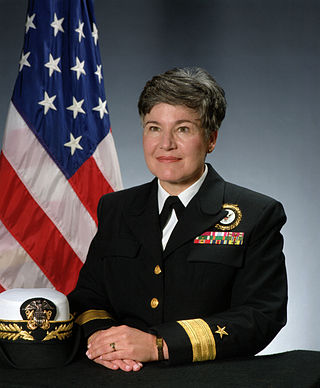
Retired Rear Admiral Barbara Elizabeth McGann was the executive director of the Advanced Math and Science Academy Charter School in Marlborough, Massachusetts until her retirement at the end of the 2010 – 2011 academic year. She was one of the first women to achieve two-star rank in the United States Navy.
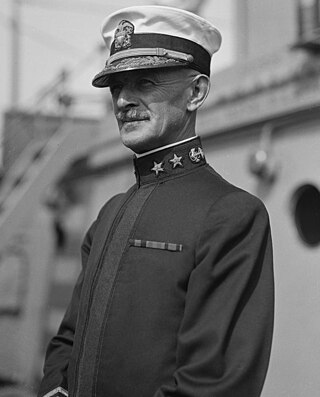
Rear Admiral Spencer Shepard Wood was a United States Navy officer. His career included service in the Spanish–American War and World War I, command of battleships and cruisers, and duty as an aide to a number of senior naval leaders.
James Francis McNulty was a U.S Maritime Service (USMS) Rear Admiral, a United States Navy Captain, and an educator of both Naval Officers and Merchant Marine Officers. He began his naval career in 1953 shortly after graduating from Massachusetts Maritime Academy.with a B.S. in Marine Engineering. He served as a Naval Surface Warfare Officer for twenty-two years, which included service as Commanding Officer on destroyers ,lead speechwriter for the Chief of Naval Operations (Zumwalt), and culminated in his final position as Chief of Staff of the Naval War College in Newport, Rhode Island. He was a veteran of the Korean War and the Vietnam War. and retired from the U.S. Navy in 1977. As a firm believer in "giving back", he went on to serve the next generation as an educator and administrator in the United States Maritime Service, as Academic Dean at Maine Maritime Academy, Head of the Marine Transportation Department at Texas A&M University Maritime Academy, and ultimately as Superintendent of Great Lakes Maritime Academy.

John Benjamin Totushek is a retired vice admiral in the United States Navy. He was Chief of the United States Naval Reserve from October 1998 until October 2003. After retirement, he served as president and CEO of the United States Navy Memorial Foundation from November 2011 to July 2016.

Harold Cecil Train was a rear admiral in the United States Navy who served as the Director of the Office of Naval Intelligence between 1942 and 1943 and as commanding officer of the battleship USS Arizona. He was father of Admiral Harry D. Train II and grandfather of Rear Admiral Elizabeth L. Train.

Percy Wright Foote was an American naval officer, and rear admiral of the United States Navy who served as the commanding officer of a US ship during World War I. The President of the United States of that time conferred Distinguished Service Medal upon Foote for representing his responsibilities as commanding officer of the USS President Lincoln. Foote was praised by the Government of United States and the navy officials for combating a disaster when torpedoes from the German submarine U-90 struck his ship on 31 May 1918.

William Ward Smith was a decorated officer in the United States Navy with the rank of Vice Admiral. A graduate of the Naval Academy and participant of several conflicts, he distinguished himself during World War II as Commander, Cruiser Task Force during the Battles of the Coral Sea and Midway in May and June 1942.
















